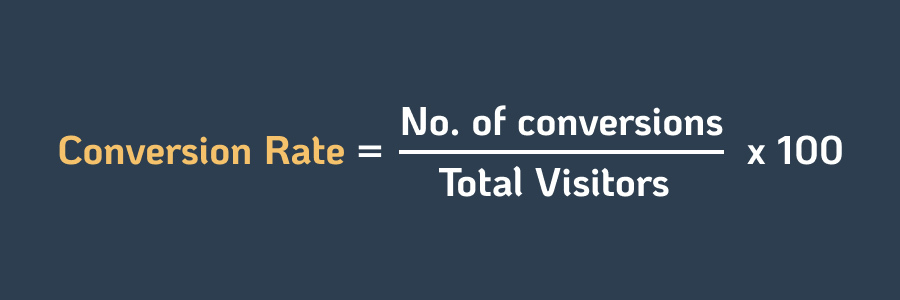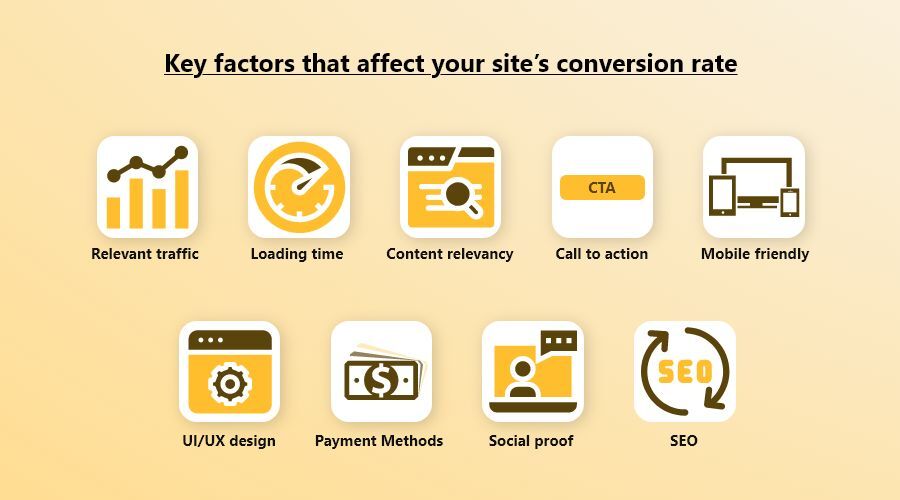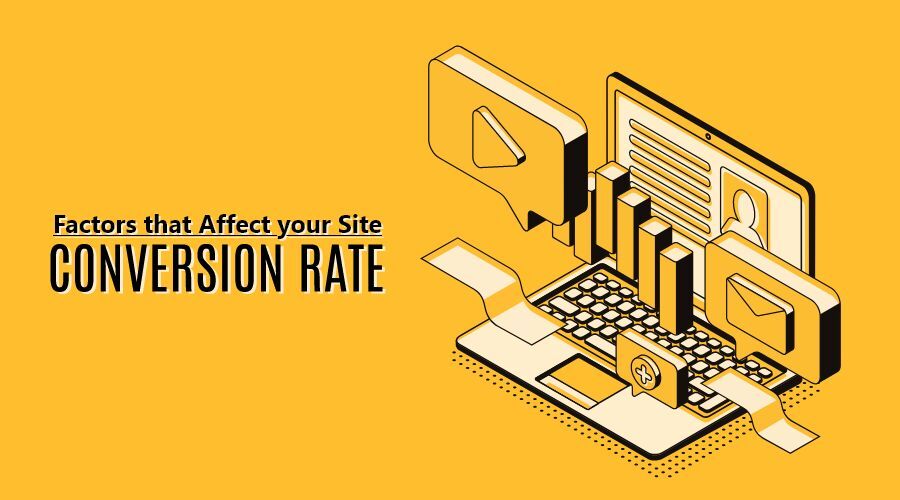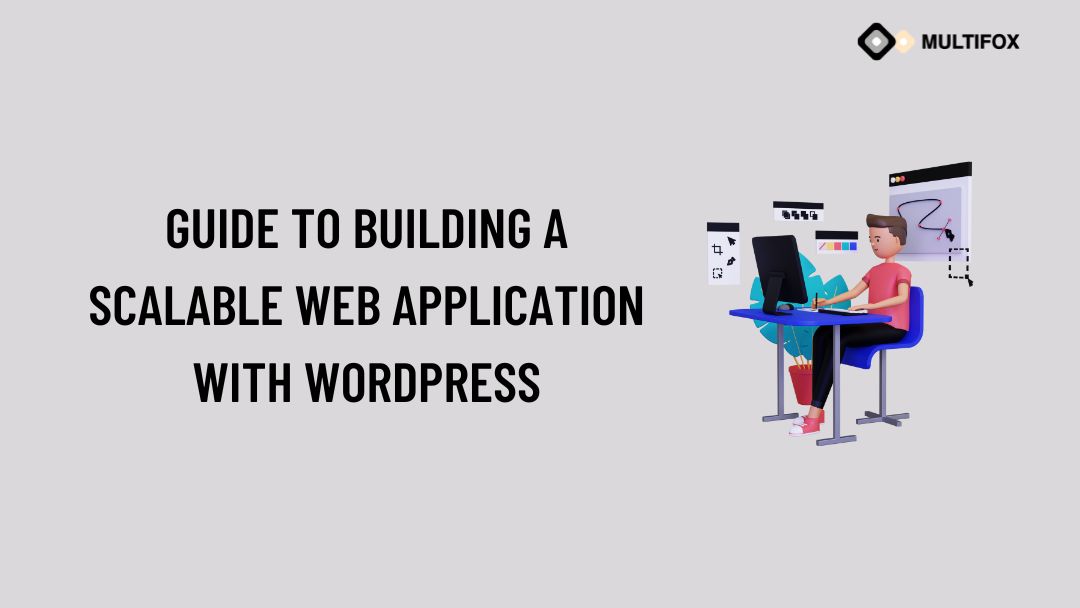Are you looking to build a scalable web application with WordPress but don’t know where to start? You’re not alone. WordPress is a powerful...
If it doesn’t convert, it doesn’t work. Usually, conversion rate optimization, or CRO, goes hand in hand with your company’s revenue growth. To do a profitable online business, you need to be concerned about visitors doing specific actions like subscribing, filling out forms, and making purchases.
This post will walk you through the essential factors influencing these actions and boosting your conversion rate.
But first, we’ll walk you through the basics.
Table of Contents
What Is Conversion Rate?
In online marketing, the conversion rate is the ratio of the total number of visitors to those who took desired actions.
Generally, there are two conversion types macro and micro.
Macro conversion covers the actions of visitors that are aimed at completing tasks that bring in revenue to your company, such as
- Filling out forms
- Making a purchase
- Requesting a quote or signing up for free trials.
Micro conversions, on the other hand, include an action that doesn’t directly lead to revenue growth but precedes macro conversions. Examples
- Include blog subscriptions
- Social media following
- Case study views
- Free ebook downloads.
Depending on your goal, marketers highlight macro and micro conversions to bring in the best results.
How is Conversion Rate Optimization Determined?

High conversion rates mean your site attracts the right target audience for a particular product or service.
Calculating your conversion rates means dividing the number of page visitors by the number of visitors competing for the sought-after action on the website in a given timeframe. Then, you multiply the given number by 100 to get the percentage.
Key factors that affect your site’s conversion rate

1. Relevant traffic
Which one is better? Getting more traffic to bring in more leads or increasing your conversion rate with the current traffic? Well, that depends on where you get most of your money from.
First, you need to check the quality of traffic your site gets. If the traffic is targeted, but you still need a boost in your conversion rates, you need to focus on conversion optimization.
When your conversion rates are high, yet you can’t think of changes you can work on at that moment, then you might have to review your pay-per-click campaigns to bring in more traffic.
2. Website Loading time
Your site’s load time will be the first obstacle between users and your site. Ideally, we recommend that your page loading time be no longer than 2-3 seconds.
Still, in reality, many users hit the “back” button sooner because they think there’s a problem with the browser or the page is unavailable. So, short loading time is crucial in keeping your customers on-site.
3. Content relevancy
Apart from having a friendly design and a strong call-to-action, it would be best if you also thought about whether or not your copy will help you make your way to conversion rate optimization.
Just like any other marketing strategy, your content strategy should begin by identifying who your target audience is. When you know who your readers are, you can easily find their areas of interest.
It would help if you also determined the sales funnel stages your customers go through when choosing the most exciting topics that reflect your audience’s pain points.
For instance, you’re selling sports products. Then you might consider telling stories about outdoor activities, giving healthy tips and how-tos, and publishing interviews from sports influencers and instructors.
4. Call to Action
Do you want visitors to complete specific actions? Then tell them so! Just make sure when, where, and how you should tell them.
A surplus of information online doesn’t leave users to browse your pages thoroughly. Instead, people scan pages and pay attention to the key elements of your site. That’s why you need to know the psychology of CTAs to capture people’s attention.
CTAs could be an animation, button, image, text, or video. It also encourages visitors to do specific tasks depending on the nature of their business.
So, if you want CTA Buttons that convert, make sure they’re user-friendly. Avoid using aggressive techniques that only frustrate visitors before they can give your product or services a go.
5. Mobile friendly
To improve your site conversion rates, you must ensure it looks and works well on mobile. Mobile devices generate the majority of web traffic. In fact, according to Statista, traffic generated on mobile is responsible for 58.99 of global traffic during the second quarter of 2022.
If your site isn’t optimized for mobile, you’ll likely suffer from low conversion rates. One of the best ways to make your site mobile friendly is to utilize big, easy-to-read texts with the right font, like Open Sans.
You should also use images that don’t take long to load, avoid complex layouts, and use big call-to-action buttons.
6. UI/UX design
Your site is judged by its design. That’s why you must consider your site’s usability, user engagement, and key performance indicators that give you the highest conversion rates.
To boost your conversion rates, you also need to:
- Enhance onboarding
- Use familiar design patterns in layouts
- Add eye-catching visuals
- Optimize your site loading speed
- Include strong CTAs
7. Payment Methods
Offering various payment methods could benefit your conversion rates in the long run. Some customers might want to disclose their sensitive information on your site. That’s why you must offer a variety of payment alternatives.
In other words, customers hesitate at checkout even if they’re convinced they already have enough information about a product.
Offering a variety of payment options is vital to enhancing your conversion rates. Ensure you include digital wallets, bank transfers, and cash on delivery options apart from credit cards.
8. Social proof
According to research, 89% of consumers check online reviews first before ultimately making a purchase. In fact, 49% consider positive ratings and reviews among the top three influencing factors affecting purchases.
Putting social proof on your site can affect your reputation as well as your web conversion rate. Apart from that, add reviews and testimonials to your site. Similarly, you can link your customers to other pages where your past customers have left reviews.
It should be clear why people love using your product and service and can confidently recommend it to others. Otherwise, your site’s conversion rates will suffer.
9. SEO
SEO isn’t achieved by just a savvy placement of meta descriptions and backlinks. One of the most underestimated criteria is the reliability of available URLs.
In fact, according to John Muller, the Webmaster Trends Analyst at Google, 301 redirects are only practical if the content and the new address are the same as that which is found on the previous URL.
In Summary
To sum it up, if you want higher website conversion rates, you need to pay close attention to several things. For starters, you must ensure that your site doesn’t take long to load and works as it should on mobile.
Next, you need to write authoritative content that makes prospective customers see the ins and outs of your industry. Although doing all of these might eventually cost you a lot of time and money, it’s ultimately worth it. Good luck!
Also, Read Our Related Articles:


